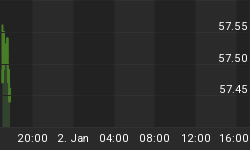The consumption of natural resources and consequentially pollution has led to increased attention for the environment in most parts of the world. While it is safe to assume that benign intentions are not the only reason for the growth in renewables, financial factors are also influencing decision makers. Technological improvements and strong competition from Asian producers, particularly Chinese companies, have significantly reduced costs. Although the energy sector is quickly changing in favor of renewables, certain technological factors are hampering its further development.
Rising global energy production
Despite President Trump’s positive rhetoric concerning fossil fuels and the American unilateral withdrawal from the Paris Climate Accord, the share of renewables is rising in the U.S. Clean energy sources accounted for nearly 18 percent of the overall energy mix in 2017 of which solar and wind projects made up roughly 62 percent of new power construction.
In the EU a wide disparity exists between leaders in renewable energy production and those that are lagging behind. A combination of political/societal support, geographic advantages, and financial muscle determine whether energy goals are being met. Scandinavian countries like Sweden and Finland top the list due to favorable geographic conditions (large hydropower capacity) and strong societal support for the energy transition. Germany has made the largest investment totaling approximately $150 billion but the share of renewables is still modest compared to other countries.

(Click to enlarge)
China has been struggling with rampant pollution and smog filled skies over its major cities. In order to tackle this problem and reap financial and strategic rewards, Beijing has marked technological developments of its energy sector part of the ‘Made in China 2025’ strategy. The Asian country is now ranked as the world leader when it comes to renewable energy installations and the development of new technologies.

Complexities of the energy transition
The relative quick adaptation of wind and solar can be interpreted as a success story. Before a truly global energy transition can be realized, however, two technological impediments need to be resolved. This involves the sustainable integration of renewables on a massive scale while maintaining a reliable and stable energy grid.
The dispersed and decentralized nature of renewable energy production is a challenge to the existing grid. A complication arises when production and transportation are not synchronized accordingly such as in cases where the electricity cannot be processed due to capacity limitations.
This is a major problem in some industrialized countries. Curtailment has led to a significant waste of electricity in for example China. The government has responded by coordinating the construction of new wind farms and the accelerated development of grid extension projects in order to decrease the curtailment rate which stands at 8.7 percent for wind and 3.6 percent for solar, down 5 and 3.2 percentage points respectively. Related: Growing Economic Threats Could Boost Gold Prices
Germany has had similar problems concerning wind energy. A significant portion of the country’s wind farms is in the northwest in the North Sea while the industry is primarily located in the southwest. The discrepancy between production and consumption requires significant investments in the grid to transport the electricity to where it is needed most and optimize the energy transition.
From slow mover to a leader
The Netherlands is one of the worst performers in the EU when it comes to the energy transition even though the country has the technological capacity and financial muscle to make a difference. The primary reason behind the slow transition is the single biggest gas field in Europe which for several decades has provided the country with cheap energy. However, environmentalism is on the rise.
While the Netherlands has had a slow start, the changing political climate and decreasing costs of renewables have been a boost for the energy transition. To this purpose, even natural gas is being repressed from future scenarios. However, the technical limitations of the energy transition require high-yield energy sources to supplement wind and solar. Especially the intermittent nature of renewables and the inability to store large volumes of energy require the extra capacity that natural gas-powered power plants can provide.
Although the energy transition is unavoidable in case we want to maintain a habitable planet, the effective execution will decide its success. A balanced transition taking into account complications such as curtailment and intermittency require traditional energy sources such as natural gas to maintain a reliable and stable grid until technological progress provides alternatives.
By Vanand Meliksetian for Oilprice.com
More Top Reads From Safehaven.com

















